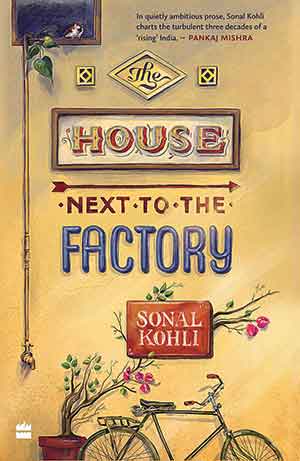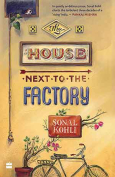The House Next to the Factory by Sonal Kohli
 New Delhi. Fourth Estate. 2021. 185 pages.
New Delhi. Fourth Estate. 2021. 185 pages.
IN HER FIRST collection of fiction, The House Next to the Factory, Sonal Kohli brings us very close to her characters. They are so close, we can feel them breathing. In “Morning Visitor,” “Yamuna sat on the metal cot, clipping her nails. Her hair was wet. The sun warmed her scalp.” We care immediately in “One Hour, Three Times a Week” for Mr. Lamba, the tutor whose friend, a Sikh shopkeeper, markets his services because Mr. Lamba is too reserved. Through his friend, he gets a job teaching Raghu and his cousin in the house next to the factory. Without any unnecessary explanation, other stories drop us into scenes in contemporary settings. Raghu’s little sister, Kavya, anchors many of the stories. In “Morning Visitor,” their grandmother, Pushpa, resents the visit of her school friend, Yamuna, who is making the rounds of wealthier friends, seeking alms.
In these nine interconnected stories, Kohli focuses her microscope on class and politics without any editorializing of either. Kohli begins the first story in 1984, against the backdrop of the Sikh riots after the assassination of Indira Gandhi by her Sikh bodyguards. Kohli ends in the contemporary world of France, with Kavya grown, where she “breathes in the calm night and breathes out her frustration.” We pause to remember history that has never been fully reckoned, but the frustration is not overtly political. If this is a humanity in search of purpose, the echoes are universal.
All the characters feel adrift, even though anchored to their surroundings. But this is less allegory than ethnography. In its detail, Kohli’s prose is sometimes reminiscent of Amit Chaudhuri. Like Chaudhuri, she takes us into the living rooms I grew up in in India. But as easily, she wears the uncertain adulthood of an Indian in the twenty-first century. What is present is a constant referencing between individuals to their inanimate surroundings and to other humans, people searching for one another or taking another’s presence for granted, bewildered by the connection but like magnets unable to stay apart. This flickering heat is subtle, but coupled with the sweet detail of her prose, Kohli entices.
Once we are close, we wait, we observe, and a story delivers a gentle promise. More often, we are left waiting for an epiphany. We are brought so close, yet we are still at a distance from what will make our character content. Whatever is longed for in some of these characters is unrealized today, but perhaps tomorrow with another book, Kohli will tell us what happened next, because she has made us care very much from the first page of The House Next to the Factory.
Leeya Mehta
Washington, DC
































